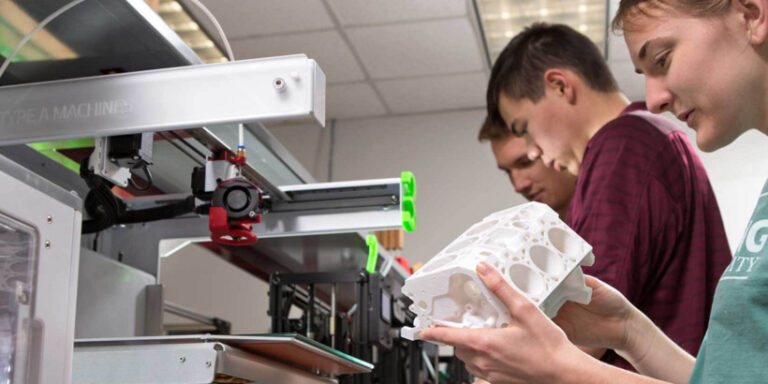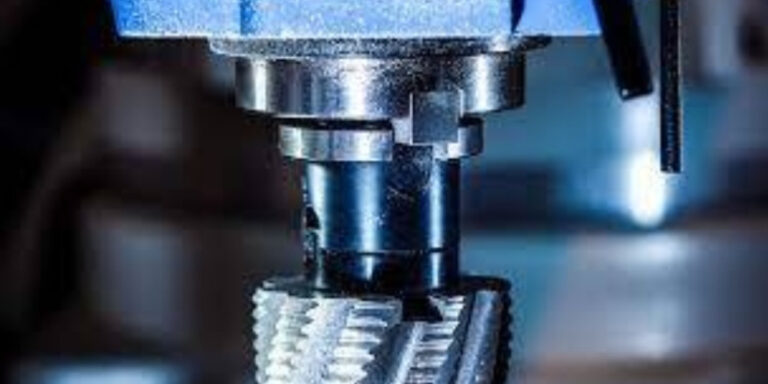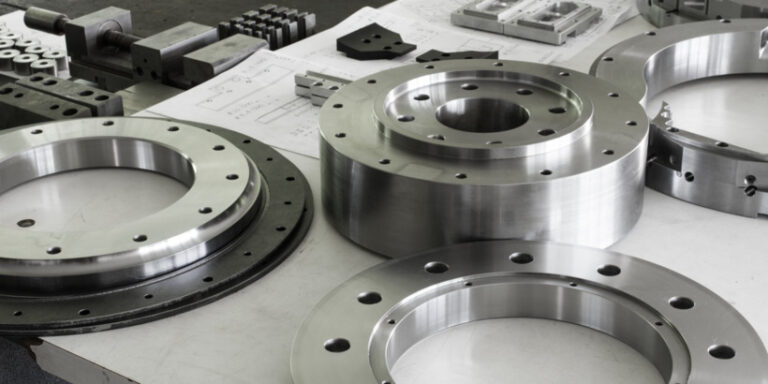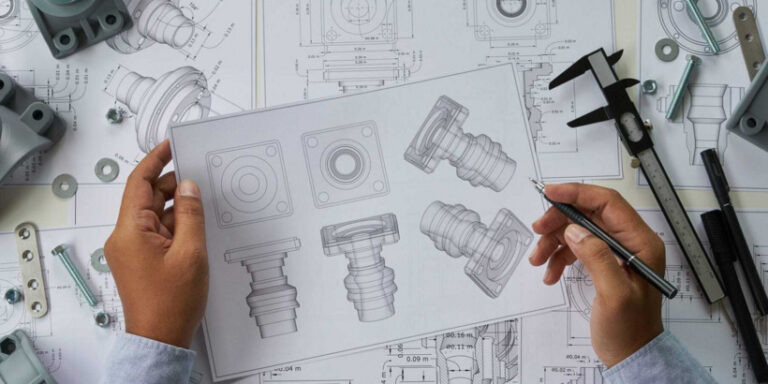Computational Fluid Dynamics In Mechanical Design And Analysis
If you’re someone who’s always been fascinated by how things move through the air or water, then computational fluid dynamics (CFD) is a field that should definitely grab your attention.
CFD is an area of mechanical engineering that uses numerical methods and algorithms to solve problems related to fluid flow and heat transfer.
It has become increasingly important in recent years as it allows engineers to simulate complex designs and analyze their performance without having to rely on expensive physical testing.
With the help of CFD software, engineers can quickly model different scenarios and explore various design options before settling on one.
This process not only saves time but also reduces costs associated with prototyping and testing.
Additionally, accurate simulation results enable designers to optimize their products for better performance, efficiency, safety, and environmental impact.
Whether you’re designing a Formula 1 car or optimizing a wind turbine blade, CFD can be an incredibly powerful tool in your arsenal.
In this article, we’ll take a closer look at what CFD entails and why it’s such an essential part of mechanical design and analysis today.
What Is Computational Fluid Dynamics?
Hey there, have you ever wondered how engineers and designers predict the behavior of fluids in complex systems? That’s where Computational Fluid Dynamics (CFD) comes into play.
CFD is a field of study that focuses on simulating fluid flow and heat transfer using computer algorithms to solve mathematical equations. The fundamentals of CFD involve three main components: the governing equations describing fluid motion, boundary conditions defining the physical environment, and numerical methods for discretizing these equations to solve them numerically.
One of the most critical aspects of CFD modeling is turbulence modeling since turbulent flows are prevalent in many engineering applications but difficult to simulate accurately due to their chaotic nature. Therefore, researchers have developed various models that can provide accurate results depending on the complexity of the flow being simulated.
By utilizing CFD simulations, engineers can analyze different design concepts and optimize system performance without building costly prototypes or conducting extensive experiments.
Benefits Of Cfd In Mechanical Design
Now that we’ve delved into the basics of CFD, let’s talk about its benefits in mechanical design.
First things first, who doesn’t like reducing costs? With CFD simulations, engineers can identify potential issues early on and make necessary changes without having to go through costly physical prototypes. This saves both time and money for companies.
Additionally, CFD helps improve accuracy by providing detailed insights into fluid behavior that cannot be observed with traditional testing methods. These accurate predictions allow engineers to optimize designs and achieve better performance results.
Overall, it’s safe to say that incorporating CFD in mechanical design is a smart move for any company looking to stay ahead of the game.
Simulating Complex Geometries
When it comes to computational fluid dynamics in mechanical design and analysis, simulating complex geometries is a crucial part of the process.
Advanced modeling techniques allow us to accurately represent intricate shapes that would be impossible to replicate physically.
However, with greater complexity comes the need for increased mesh refinement.
Meshing is essentially dividing up the geometry into smaller elements so that calculations can be performed on each individual piece.
The more refined the mesh, the more accurate our results will be.
This means we must strike a balance between model fidelity and computational efficiency.
By utilizing advanced modeling software and carefully selecting appropriate mesh parameters, we are able to simulate complex geometries with high accuracy while maintaining reasonable computation times.
Analyzing Flow And Heat Transfer
Now that we have covered the basics of computational fluid dynamics (CFD), let’s dive into analyzing flow and heat transfer.
When studying fluid dynamics, turbulence modeling plays a crucial role in understanding how fluids behave under different conditions. This is especially true when dealing with high-speed flows that result in shock waves forming within the fluid.
By accurately modeling these turbulent flows, designers and engineers can identify potential problem areas and optimize their designs to improve efficiency and performance. Additionally, CFD simulations can also be used to analyze heat transfer within a system, such as cooling systems for electronics or thermal management in engines.
Understanding how heat is transferred throughout a system allows for better design choices to be made and ensures that components are operating at safe temperatures.
With powerful CFD software available today, simulating complex fluid dynamics has never been easier or more accurate.
By incorporating advanced techniques like turbulence modeling and shock wave analysis into our CFD simulations, we gain insightful knowledge on how fluids behave in various environments.
Similarly, analyzing heat transfer patterns enables us to make informed decisions about engineering designs while ensuring safety standards are met.
As technology continues to advance, so does our ability to simulate increasingly complex fluid interactions, making it possible to create products that perform optimally across all aspects of operation.
Optimizing Performance And Efficiency
Now that we’ve covered the basics of computational fluid dynamics (cfd) in mechanical design and analysis, let’s take a moment to talk about optimizing performance and efficiency.
This is where things start to get exciting! With cfd, we have the ability to not only visualize flow patterns but also predict how they will behave under different conditions.
By incorporating turbulence modeling into our simulations, we can gain an even deeper understanding of how fluids interact with surfaces and structures.
And here’s the best part: armed with this knowledge, we can tweak designs and test them virtually until we achieve optimal performance and efficiency.
It’s like having a crystal ball for engineering! Whether you’re working on aerodynamics for aircraft or reducing drag on a race car, cfd has the power to transform your approach to design.
So why settle for mediocre when you can be extraordinary?
Testing Different Design Alternatives
Now that we have established the importance of computational fluid dynamics (CFD) in mechanical design and analysis, let’s delve into testing different design alternatives.
Rapid prototyping has revolutionized the way engineers test their designs by allowing them to create tangible models quickly and efficiently. With rapid prototyping, it is possible to test multiple design concepts and identify potential flaws before committing to a final product.
Furthermore, multi-physics modeling enables us to analyze complex systems with various physical phenomena occurring simultaneously. By taking into account factors such as heat transfer and structural integrity alongside fluid flow simulations, we can create more accurate models for our designs. This approach allows us to optimize performance while also reducing costs associated with physical testing.
Incorporating both rapid prototyping and multi-physics modeling techniques into our workflow enables us to experiment with different design alternatives thoroughly. Through this process, we can refine our ideas until we arrive at an optimal solution that meets all requirements effectively without compromising quality or safety standards.
Ultimately, utilizing these tools helps ensure success when designing products or systems where fluid dynamics play a significant role.
Using Cfd To Drive Innovation
Using CFD to drive innovation has been a game-changer for mechanical design and analysis. It’s allowed me to explore new possibilities, push boundaries, and create products that are efficient and effective.
With the help of machine learning, I’ve been able to optimize designs faster than ever before by using algorithms that learn from past simulations to predict future ones. And with turbulence modeling, I’m able to accurately simulate complex flow patterns that were previously impossible to model.
This technology not only saves time but also reduces costs associated with physical testing. By embracing these tools, we can unlock endless opportunities for growth and development in our field.
Conclusion
In conclusion, I must say that the world of mechanical design and analysis has been revolutionized by the advent of Computational Fluid Dynamics.
The ability to simulate complex geometries, analyze flow and heat transfer, optimize performance and efficiency, as well as test different design alternatives have all made CFD a game-changer in this field.
As someone who has worked with CFD on several occasions, I can attest to its effectiveness in solving problems related to fluid dynamics.
With CFD, engineers can now create models that mimic real-world situations with such accuracy that they can predict how fluids will behave under varying conditions.
This level of precision is vital when it comes to optimizing designs for maximum efficiency and minimum cost.
In short, if you want to stay ahead of the competition in mechanical design and analysis today, then you need to embrace Computational Fluid Dynamics.
It’s not just about improving existing products; it’s also about using CFD to drive innovation and create new products altogether.
So go out there and start exploring what CFD can do for you!






